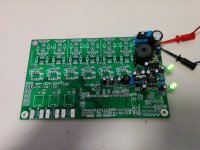purple_jeep
1 W
- Joined
- Mar 21, 2014
- Messages
- 53
Hi All,
I am fairly new to Electric Vehicle design and operation with brush less DC motors but I am an EE so hopefully I will pick it up fast but go easy on me as I get there
My brother (Bluefang) has asked me to build some Leowski style controllers http://www.endless-sphere.com/forums/viewtopic.php?f=30&t=57877 and see if we can get them running with IPM as an end goal for larger power applications (Hub monster been one of them).
My plan so far is to:
1.) Build a Lebowski controller with Lebowski output stage http://endless-sphere.com/forums/viewtopic.php?f=30&t=55641
2.) Using the same driver chips IRS2186 http://www.irf.com/product-info/datasheets/data/irs2186pbf.pdf drive IGBT modules similar to the Tesla Roadster Power module using the same layout as Lebowski's output stage liquid cooled if required
3.) Remove driver chips and drive an IPM using an external interface board for the Opto's etc required
4.) Modify Lebowski controller board to replace Driver chips with components required for IPM driving and mount board directly to IPM.
I hope to stay away from IGBT modules and their driving issues for high currents/voltages if at all possible by going straight to IPM's.
One thing I know may need some work will be the DC Link capacitor at these power levels but I should be good here as we are doing a project with the DOE at work on this very topic So I will pick the bosses brain about what to use.
So I will pick the bosses brain about what to use.
Time to get started!

Progress to date.
- Boards have been ordered and received they look fine and should work well.
- Brain chip and power control chip ordered and recieved from Lebowski
- Initial digikey orders placed for components had a bit of work to do to get everything itemized with qty and part numbers as you will see later I still missed some parts
- Ordered and received a small BLDC motor as a test motor http://www.hobbyking.com/hobbyking/store/uh_viewItem.asp?idProduct=41051
- Currently going to use a 40 Vdc 5a bench power supply set at 37 Vdc (10S) ( for testing operating not sure how well it will go.
- Spent some time yesterday assembling the power supply only to find I forgot to order a replacement Inductor for L2 as digikey was out when I put the order in and since C51 had no part number I missed it also. Parts are on order and I should have them early next week.
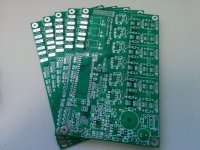
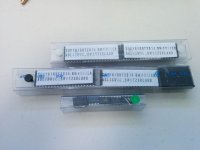
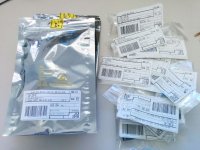
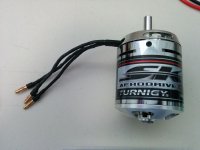
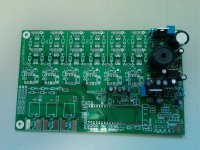
Next steps:
- Finish board assemble and test RS232 communications for configuration
- Build output stage
- Test on small motor before moving on to IGBT/IPM.
Any Comments, Questions, Things I am missing
Cheers
Chris
I am fairly new to Electric Vehicle design and operation with brush less DC motors but I am an EE so hopefully I will pick it up fast but go easy on me as I get there
My brother (Bluefang) has asked me to build some Leowski style controllers http://www.endless-sphere.com/forums/viewtopic.php?f=30&t=57877 and see if we can get them running with IPM as an end goal for larger power applications (Hub monster been one of them).
My plan so far is to:
1.) Build a Lebowski controller with Lebowski output stage http://endless-sphere.com/forums/viewtopic.php?f=30&t=55641
2.) Using the same driver chips IRS2186 http://www.irf.com/product-info/datasheets/data/irs2186pbf.pdf drive IGBT modules similar to the Tesla Roadster Power module using the same layout as Lebowski's output stage liquid cooled if required
3.) Remove driver chips and drive an IPM using an external interface board for the Opto's etc required
4.) Modify Lebowski controller board to replace Driver chips with components required for IPM driving and mount board directly to IPM.
I hope to stay away from IGBT modules and their driving issues for high currents/voltages if at all possible by going straight to IPM's.
One thing I know may need some work will be the DC Link capacitor at these power levels but I should be good here as we are doing a project with the DOE at work on this very topic
Time to get started!

Progress to date.
- Boards have been ordered and received they look fine and should work well.
- Brain chip and power control chip ordered and recieved from Lebowski
- Initial digikey orders placed for components had a bit of work to do to get everything itemized with qty and part numbers as you will see later I still missed some parts
- Ordered and received a small BLDC motor as a test motor http://www.hobbyking.com/hobbyking/store/uh_viewItem.asp?idProduct=41051
- Currently going to use a 40 Vdc 5a bench power supply set at 37 Vdc (10S) ( for testing operating not sure how well it will go.
- Spent some time yesterday assembling the power supply only to find I forgot to order a replacement Inductor for L2 as digikey was out when I put the order in and since C51 had no part number I missed it also. Parts are on order and I should have them early next week.





Next steps:
- Finish board assemble and test RS232 communications for configuration
- Build output stage
- Test on small motor before moving on to IGBT/IPM.
Any Comments, Questions, Things I am missing
Cheers
Chris



